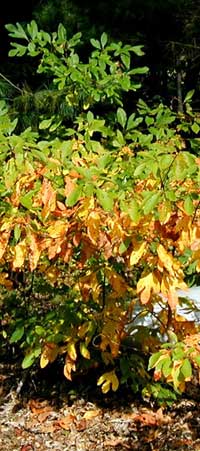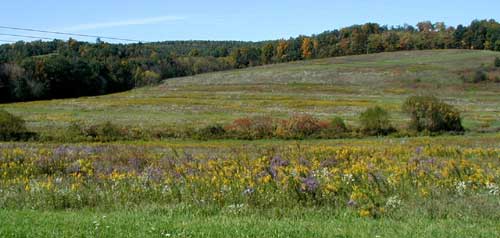Sassafras is a favorite woodland herb. It is really a tree, but the roots can be used liked an herb. Sassafras grows quickly at the edge of the oak forest and requires cutting back every so often.
Each time that I cut sassafras I try to bring up some of the root to save for tea. Smelling the roots as you’re digging them up justifies the effort. A pleasing scent, I’ll say.
The roots are shaken of dirt and rinsed with water to gently clean. Roots are placed in a saucer or bowl in a cupboard and left there to cure.
When I feel like a cup of sassafras tea I have only to open the cupboard to retrieve a few roots, put them in near boiling water for a couple minutes, and pour the tea. The aroma totally gets me. You should try it!
In the fall the small sassafras trees seem like they dry up from the bottom with their lowest leaves turning a orange-yellow first, followed by leaves higher up. Eventually all the leaves turn a nice yellow-orange before dropping off.

Sassafras leaves turning colors from the bottom up.
Autumn colors start arriving in fallow fields in late summer. Land that has been allowed to sit undisturbed for several years will witness waves of color as the seasons progress, and some of the most noticeable colors come in the fall.
For most of September and into the beginning of October goldenrods dominate the landscape with hues of yellow. Purple asters complement the soft yellows and draw your eye’s attention.
Pretty colors in the fields are vibrant for a couple weeks as if heralding that the tree leaves will soon start changing their colors, too.
